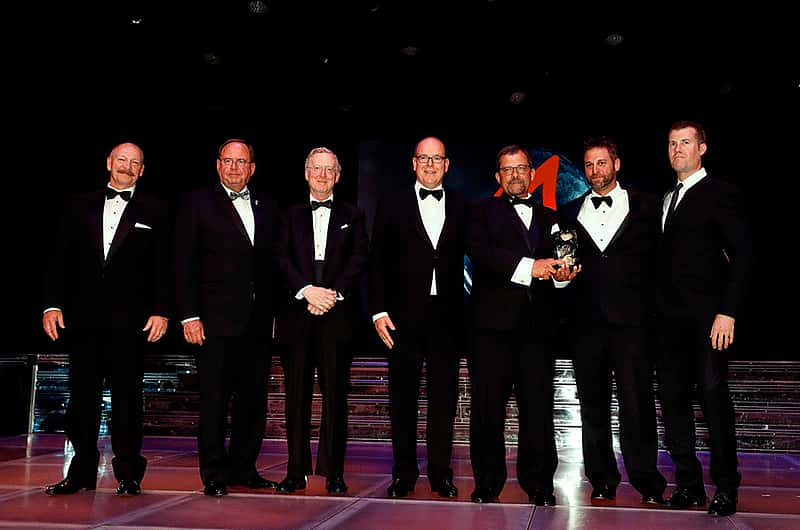
Center of the West taps Yale as next “Invisible Boundaries: Exploring Yellowstone’s Great Animal Migrations” venue
Here’s what happens when a scientist and a photographer win the Buffalo Bill Center of the West’s Camp Monaco Research Prize. They recruit an artist—and a filmmaker, of course—and all four are instrumental in an extraordinary exhibition, Invisible Boundaries: Exploring Yellowstone’s Great Animal Migrations, now scheduled to travel to the Yale Peabody Museum of Natural History in fall 2017.
Even before they received the 2013 Camp Monaco Research Prize, Arthur Middleton, the Yale scientist; Joe Riis, the National Geographic photographer; and James Prosek, the popular contemporary artist have dedicated much of their lives to discovering and sharing migration stories. After hearing the team’s pitch about the exhibition “Invisible Boundaries” at the Buffalo Bill Center of the West, filmmaker Jenny Nichols—whose only appearance in the exhibition’s video footage is a passing reflection in Middleton’s sunglasses—was quick to say, “I’m in!”
On view nearly simultaneously at National Geographic Museum in Washington, DC, and the Center of the West since spring 2016, Invisible Boundaries has met with high acclaim from audiences. “With our office located so near the exhibition, we’re privy to our visitors’ exclamations about the amazing photography, video footage, technology, and interactive components; the whole experience clearly wowed them,” Acting PR Director Marguerite House explains. “It’s sure to have the same effect next year on Yale visitors, too.”
Co-curated by Dr. Charles R. Preston, the Center’s natural history curator; Karen McWhorter, curator of western American art; and Middleton, the multi-disciplinary exhibition presents the paths traced by elk migration—nine separate herds in all—within the Greater Yellowstone Ecosystem (GYE), trails that crisscross the region like a Jackson Pollock abstract painting on canvas. On the move, elk—and other migratory species in the area—weave in and out, back and forth through lands under a variety of separate, public, and private jurisdictions, boundaries that mean nothing to the resident wildlife.
Presented every three years, the Camp Monaco Prize is named for a 1913 hunting camp established by William F. “Buffalo Bill” Cody near Yellowstone National Park in honor of the visiting Prince Albert I, the great, great grandfather of His Serene Highness, the Sovereign Prince of Monaco Albert II. The grant focus is GYE biodiversity research and public education, and is funded by the joint efforts of the Center of the West’s Draper Natural History Museum, the University of Wyoming Migration Initiative, and the Prince Albert II of Monaco Foundation-USA.

And now that the first Camp Monaco Prize has effectively launched important research into GYE animal migration, the Center anxiously awaits the outcomes of the second prize awarded earlier this summer in Monaco. HSH Albert II of Monaco was on hand to honor recipients Dr. Craig M. Lee (University of Colorado), Dr. David McWethy (Montana State University), and Dr. Gregory T. Pederson (U.S. Geological Survey’s Northern Rocky Mountain Science Center). Their project examines newly discovered plant, animal, and archaeological remains in retreating ice fields in order to develop a broader perspective and better understanding of environmental change and past human activity in the GYE’s higher elevations.
Since 1917, the award-winning Buffalo Bill Center of the West in Cody, Wyoming, has devoted itself to sharing the story of the authentic American West. The Center is an affiliate of the Smithsonian Institution. For additional information, visit centerofthewest.org or the Center’s Facebook page.
Written By
Nancy McClure
Nancy now does Grants & Foundations Relations for the Center of the West's Development Department, but was formerly the Content Producer for the Center's Public Relations Department, where her work included writing and updating website content, publicizing events, copy editing, working with images, and producing the e-newsletter Western Wire. Her current job is seeking and applying for funding from government grants and private foundations. In her spare time, Nancy enjoys photography, reading, flower gardening, and playing the flute.

